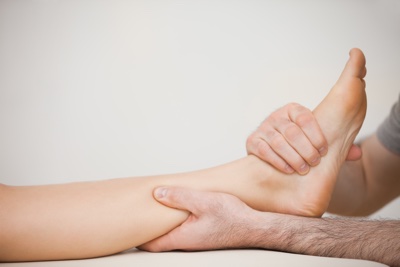Achilles
ACHILLES TENDONITIS & RUPTURE

The Achilles tendon is the strongest tendon in the body. It is vitally important for walking and for any sporting activities. Achilles tendon problems are very common and range from tendinitis and tendinosis (inflammation and degeneration of the tendon itself) to ruptures of the tendon. Achilles tendinitis is caused by microtears in the Achilles tendon. This leads to a painful swelling and tenderness in the back just above the heel. The treatment of this often involves resting the Achilles tendon in a boot and sometimes we use platelet rich plasma to inject into the sheath tendon. Often, patients have a Haglund’s deformity which is a large bump at the base of the tendon as well. These patients most commonly require removal of the bump and a repair of the Achilles tendon. Patients also have acute Achilles tendon rupture. This most commonly occurs during a sporting event such as a racquet sport or basketball. Patients feel a pop and often feel like someone has kicked them in the back of the leg. The treatment of an Achilles tendon rupture has been shown to be most successful with surgical treatment. Patients are more likely to return to their pre-rupture level if they have surgical intervention rather than a cast treatment. I perform both open procedures and minimally invasive procedures for Achilles tendon ruptures, and overall the majority of my patients return to all of their activities after Achilles tendon rupture.
Morton’s Neuroma
Neuroma is another common condition we see in the office. A neuroma is a benign tumor of a nerve, however, a Morton’s neuroma is not actually a tumor, but a thickening of the tissue around the nerve that leads to your toes. Patients usually complain of burning pain in the ball of the foot that may radiate into the toes. The pain usually gets worse with activity.
In the office, we obtain x-rays to rule out stress fractures and arthritis in the toes. Your clinical exam may include palpation of the web space to try to replicate your symptoms. Conservative treatment may include a change in footwear, custom foot orthotics, or injection of a corticosteroid medicine. If conservative treatment does not relieve your symptoms, surgical options included resecting a small portion of the nerve and releasing the surrounding tissue around the nerve. Overall, the surgical option provides excellent outcomes with a short recovery period.
Plantar Fasciitis
The plantar fascia is a thick fibrous band of tissue originating at the bottom of your heel bone and extending along the sole of the foot towards the toes. When the plantar fascia is overly stressed, such as in cases of long periods of work-related weight bearing, pain can usually be felt centered under your heel and is often most intense with the first steps of the day.
A diagnosis is usually made based on a clinical exam. There are several non-surgical options of treating this condition, including self-stretching, physical therapy, or orthotics. We often inject platelet rich plasma into the plantar fascia to alleviate the pain and aid the healing process. I also perform endoscopic release of the plantar fascia through two small incisions on the sides of the foot.

